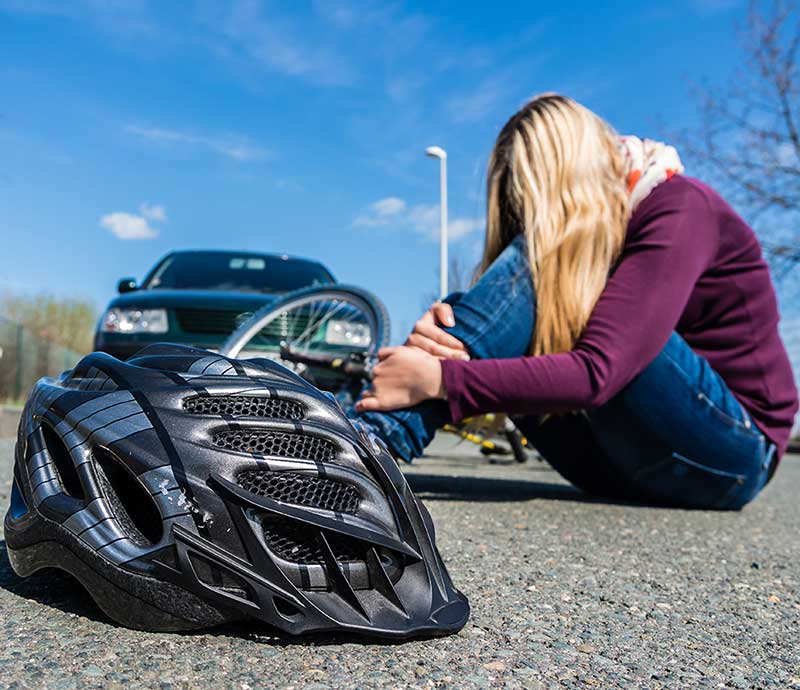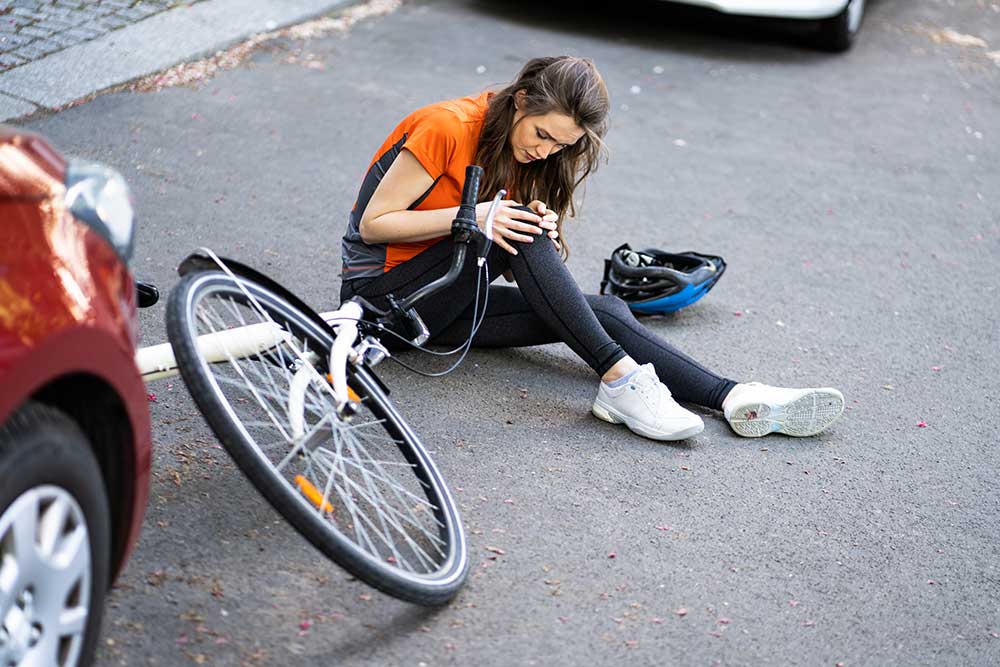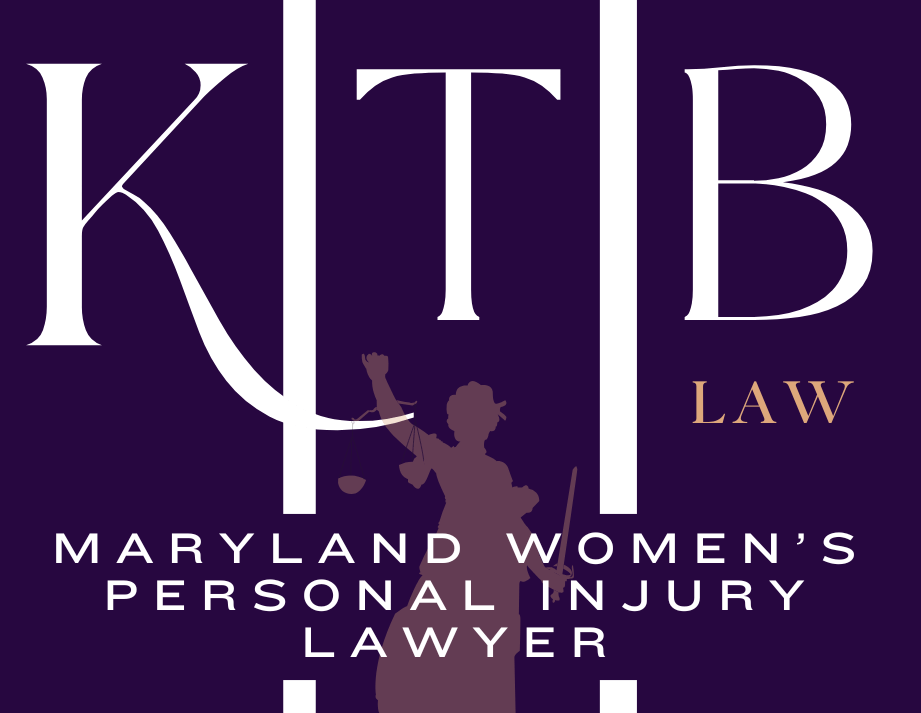Maryland Women’s Bicycle Accident Lawyer
Kellie T. Barnes, Attorney At Law can help you if you’ve been hurt in a bicycle accident in Maryland.
For a lot of women, riding a bike isn’t just about getting somewhere—it’s one of the few times you get to breathe, clear your head, and just be by yourself. That quiet stretch of road or trail can feel like your reset button.
But when a driver isn’t paying attention, that calm moment can turn into chaos in seconds. Suddenly you’re dealing with pain, hospital visits, and a hundred worries you didn’t plan for.
We can help you through the claims process. Set up a free consultation today.



Why Would I Need a Lawyer?
You might think, “I can handle this myself.”
And yes, technically you can. You can file a claim with an insurance company, or try to talk to the driver about what happened. But when you’re dealing with a head injury or some similar type of serious injury that’s common in bike accidents, it’s easy to get buried in the paperwork, medical bills, and phone calls that pile up faster than your calendar can handle.
That’s where a lawyer makes a difference. Think of us as a guide through the maze, where we will:
- Explain your rights and help you understand your options.
- Gather evidence and investigate the accident to make sure nothing is overlooked.
- Handle insurance talks so you’re not fielding calls while trying to rest.
- Build a case that accounts for the real impact on your life—physically, financially, and emotionally.
Having that support lets you focus on getting better, instead of worrying about every phone call or missing detail. But because there’s a claims process in place, everything usually starts with getting the right information and evidence.
What Do I Need for a Strong Bicycle Accident Claim?
When you’ve just been in a bicycle accident, it’s natural to feel scattered. But the evidence you collect now can make a big difference later. You don’t need to do everything perfectly—just start with what’s available:
- Names, insurance, license plates of the driver that hit you. Even a partial plate or a car color can help in a hit-and-run.
- Photos and videos of the scene, your bike, and any injuries you can see. These visuals will help recreate the accident later.
- Medical records from every ER visit, doctor appointment, and physical therapy session. They show the full story of your recovery.
- Statements from anyone who saw what happened or helped afterward—neighbors, pedestrians, other cyclists.
- Police reports can document traffic violations or right-of-way issues.
Even small notes — what the weather was like, time of day, or comments from the drive — help tell the story.
You don’t have to gather every piece at once. We’ll help fill in gaps, track down records, and make sure your case is as strong as possible. And once those pieces are together, you can move on to the next phase: filing your claim.
How Does a Bicycle Accident Claim Work Usually?
A bicycle accident can unfold in a lot of different ways, but at least legally, every accident flows toward one thing: a claim.You have a couple different options once you have all your information, and while it’s totally up to you, let’s look at them a bit more in-depth:
- Insurance claims. Most claims start here, filing a claim with the insurance company of whoever is at-fault. This can be faster than court, but insurance companies usually do whatever they can to undervalue your losses.
- Lawsuits. If insurance doesn’t cover everything, we can file a personal injury lawsuit for you in civil court. This usually takes longer and is a lot more involved, but it’s fairer because it’s overseen by a judge (and potentially a jury.)
The entire point of even filing a claim is to get financial help for your bills and other losses, which are known as “damages.” Typically, your damages will include things like:
- Current and future medical expenses
- Lost income if you missed work
- The cost to repair or replace your bike and gear
- Pain and suffering from physical injuries
- Emotional distress, anxiety, or lost confidence on the road
- Changes to your daily life or hobbies
- Funeral or burial expenses for fatal accidents (filed through a separate “wrongful death” claim)
Maryland generally gives you three years from the accident to file a claim, but starting sooner makes it a lot easier to get evidence and strengthens your claim.
As we’ve touched on, though, there’s a piece of information that’s vital to this whole process: figuring out who has to pay your damages.
Who Has to Pay For My Damages After My Bicycle Accident?
No matter how experienced or careful you are while you’re on your bike ride, a collision can happen quickly–and seemingly out of nowhere. All it takes is a split-second of carelessness and you’re left hurt. But in order to be able to file a claim and get damages, you have to show that someone’s negligence caused your accident. That depends on the circumstances, but with most bicycle accidents, this includes:
- Drivers that were speeding, distracted or even impatient. It might only take a glance at a phone or a quick turn without checking for you.
- City, county, or state government agencies that don’t maintain roads, bike lanes, or unmarked hazards.
- Other riders or pedestrians, especially if they swerve unexpectedly or step into your path.
- Bike makers, which can be responsible in the rare event that a defective brake, tire, or frame was what caused your accident.
After an accident, it’s hard not to replay the moment over and over — what happened, why it happened, and if it could have been prevented. But the reality is that there was an underlying cause–and that is what’s going to determine what your path forward looks like.
Where Do Bicycle Accidents Happen to Women in Maryland?
For many women, riding a bike is one of the few times in the day that feels completely your own — a bit of “me time” to clear your head, enjoy the fresh air, or just move at your own pace. But even when you’re cautious, some areas are naturally higher risk, and knowing them can help you stay alert.
- Busy intersections and high-traffic roads, which have tons of distracted and impatient drivers.
- Mixed-use trails and paths. They’re designed for riders, but they can be narrow. Also, crowded paths leave little room to maneuver.
- Commercial and shopping areas. These places have parking lots, driveways, and streets, which means cars pulling in or out, delivery vehicles stopping suddenly, and people crossing unexpectedly.
- School and campus zones. Schools and campus areas have high student activity and mean cyclists, pedestrians, and vehicles are all moving in unpredictable ways. Morning and afternoon rush hours can be especially tricky.
- Roads with cracked pavement, faded bike lane markings, or uneven surfaces can turn an otherwise routine ride into a dangerous one.
Obviously, you can only do so much when you’re riding your bike in one of these areas. No matter how experienced or skilled you are on your bike, you can’t account for what someone else does. This can quickly lead to an accident, but after that, our team will be there to help you.
Frequently Asked Questions
What if I don’t know what caused my accident?
This is pretty common. We can help you gather evidence, statements, and other reports that help narrow down what caused your bike accident and who’s responsible.
What if it was a hit-and-run?
You can still get help. We’ll work with police reports, traffic cameras, or witness accounts, and your insurance may provide coverage through uninsured motorist protection.
Can I file a claim if my accident happened inside a bike lane?
Yes, but these claims have shorter deadlines because they (usually) involve the city, county, or state government. Reach out to us as soon as you can to protect yourself.
Reach Out to Kellie T. Barnes, Attorney at Law After a Bicycle Accident in Maryland
Biking gives you freedom, peace, and a little slice of “me time” in a busy world. When an accident steals that from you, it can feel overwhelming—but you don’t have to face it alone.
Kellie T. Barnes, Attorney at Law knows what it’s like to be in your shoes. We handle the legal process, fight for your rights, and make sure the focus stays on your healing.
Reach out for a free consultation today, and let us help you get better and back on your bike.
